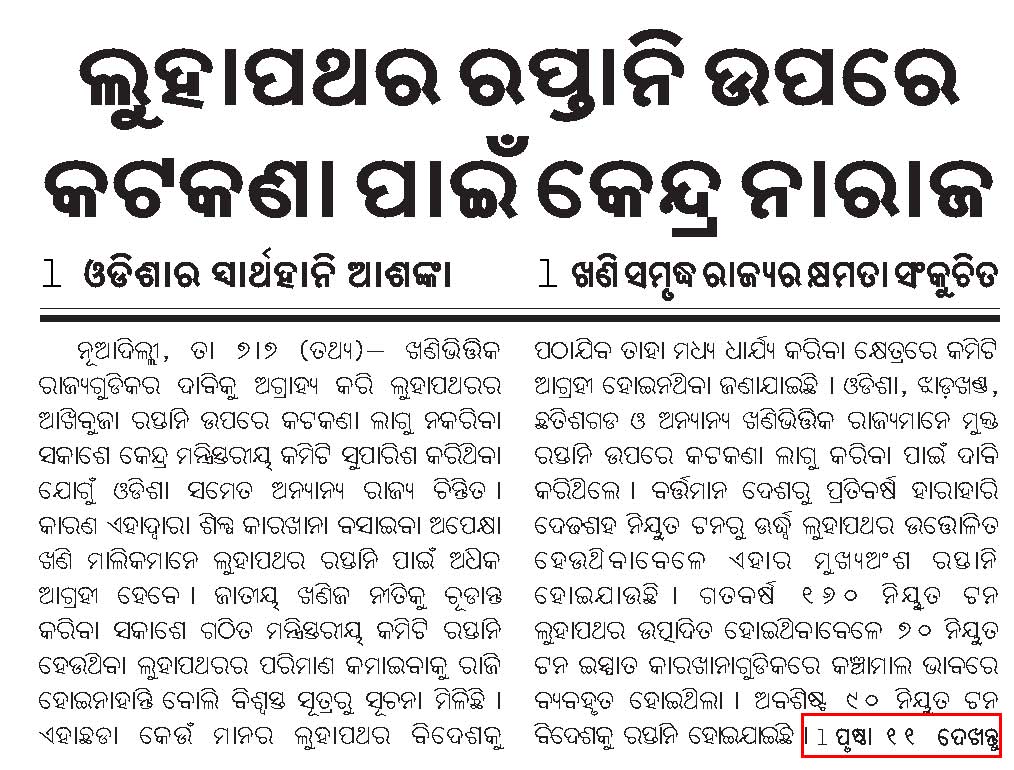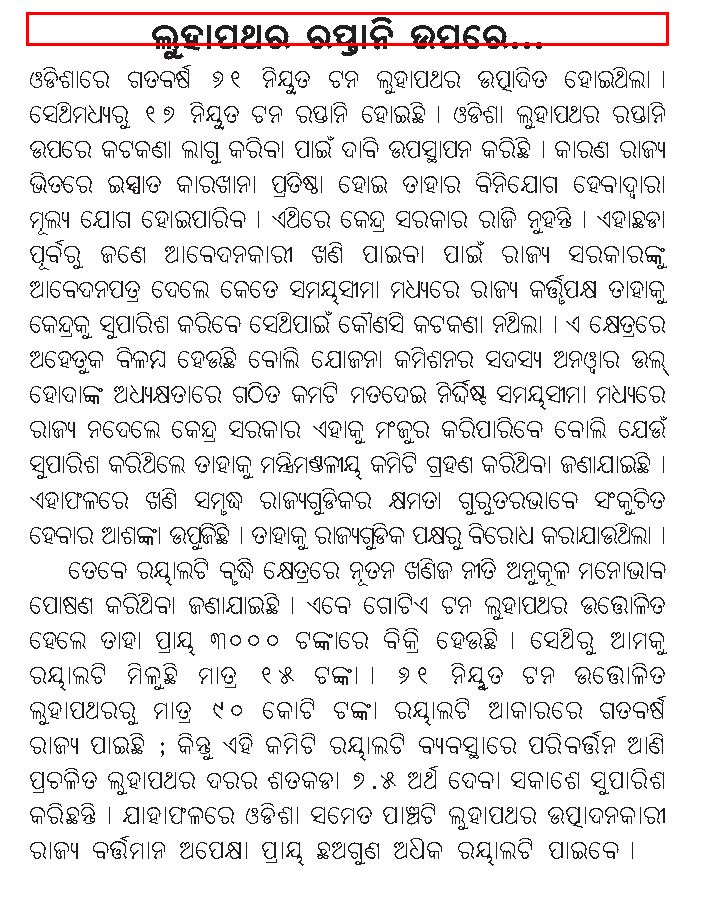On the ongoing tussle to make MCK comply with R & R policies MP Dharmendar Pradhan has compared MCL’s hirings with other similar companies hirings. New Indian Express gives a report on this and we give some excerpts from that report.
The average annual production of coal in Eastern Coalfields Limited (ECL) is 30 million tonne with a workforce of 1.02 lakh; with 95,000 manpower, the annual production of Bharat Coking Coal Limited (BCCL) is about 23 million tonne, and Central Coalfields Limited (CCL) has nearly 90,000 workforce to produce 32 million tonne.
Similarly, the Western Coalfields Limited (WCL) has about 70,000 employees with an annual production of 42 million tonne. The South Eastern Coalfields Limited (SECL) is the largest producer of coal with annual production of 88 million tonne and has 80,000 workforce.
On the other hand, MCL, the second largest producer of coking grade coal in the country with average annual production of 80 million tonne, has given jobs to 20,591 people. The company has been facing resistance from the locals for its poor policy on resettlement and rehabilitation.
MCL’s Chairman and Managing Director Aviram Sharma was caught on the wrong foot when Dharmendra Pradhan, MP, sought to know from him the manpower position in other subsidiaries of Coal India vis-a-vis their production at a high level meeting here on Thursday. The meeting was convened to discuss the contentious issue of R&R policy in MCL areas.
Pradhan told the meeting that there are nearly 5,000 rightful claimants for compensatory job in MCL. Besides, MCL is not doing a favour to them as they have already lost their land and livelihood, he argued.
Revenue Minister Manmohan Samal, who presided over the meeting, directed MCL and NTPC to implement the policy and report it every week on the progress.
Now, just because MCL employs less it does not become a bad guy. But, if must follow the R & R policies and also keep its promises. Moreover, it should consider the action by Central Coal Fields to set up an engineering college in Jharkhand. Following is an excerpt from the Business Standard article that reported on this.
The Jharkhand-based public sector Central Coalfields Limited (CCL) has established 68 schools in various parts of its working areas of different standards besides financial and other infrastructural help to 195 schools situated in and around CCL command area.
CCL has recently decided to establish on engineering college for the benefit of the people of Jharkhand.
CCL spent over Rs 1042 crore on social overhead onwards 1998. It had constructed over 160 km of heavy duty coal transportation roads. 300 km of approach road and equal length of colony roads, 6 major bridges on river Damodar, 59,455 permanent houses, 19 hospitals besides water supply schemes covering over a population of 5.02
lakh. CCL is also one of the major employers in Jharkhand.
It has 62,827 employees on the roll of which 35 per cent belonged to Schedules caste and Scheduled tribes.
The company is also one of the major contributors to state exchequer. The state has earned over Rs 2811.56 crore of royalty and other taxes from CCL?s mining activities after the constitution of Jharkhand state. …
In the financial year 2006-07, CCL has constructed/repaired 35 km new roads in nearby villages in its command area. Over and above, CCL is to organise 215 health camps for various specializations during this financial year.


